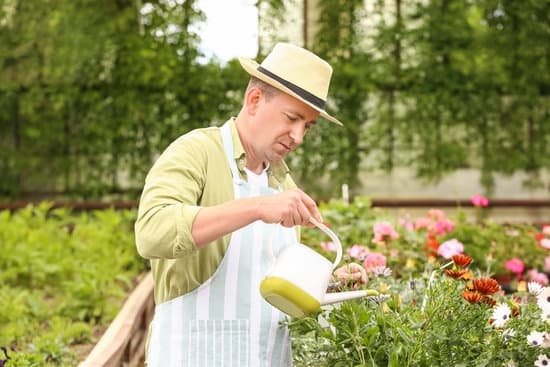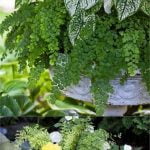Are you eager to start your own backyard gardening vegetable ideas but don’t know where to begin? Backyard gardening offers numerous benefits, from providing fresh and organic produce to being a therapeutic and rewarding hobby.
Growing your own vegetables at home not only ensures a sustainable food source but also promotes a healthier lifestyle. In this article, we will explore the essentials of backyard vegetable gardening, including choosing the right vegetables, planning and designing your garden, preparing the soil, planting and maintenance, harvesting and preserving your homegrown produce.
Backyard gardening has become increasingly popular as more people seek to live a sustainable and self-sufficient lifestyle. Not only does it reduce reliance on store-bought produce, but it also allows individuals to have full control over what goes into their food.
Growing vegetables at home enables you to enjoy fresh, flavorful, and nutrient-rich produce without the use of harmful pesticides or chemicals. Furthermore, it provides an opportunity for outdoor physical activity and relaxation, making it an enjoyable pastime for individuals of all ages.
Whether you have a sprawling backyard or limited outdoor space, there are various ways to incorporate vegetable gardening into your home environment. From container gardening on patios and balconies to utilizing raised beds and vertical gardening techniques, there are plenty of creative options for growing an abundance of vegetables in small or unconventional spaces.
The satisfaction of witnessing seeds sprout into healthy plants bearing delicious fruits is unmatched – making backyard vegetable gardening an immensely fulfilling endeavor for anyone willing to give it a try.
Choosing the Right Vegetables for Your Backyard
When it comes to backyard gardening, choosing the right vegetables to grow is essential for a successful harvest. Not all vegetables thrive in the same conditions, so it’s important to select varieties that are well-suited for your specific backyard environment. From tomatoes and peppers to leafy greens and root vegetables, there are plenty of options to consider. Here are some popular vegetable choices for backyard gardening:
- Tomatoes
- Peppers
- Cucumbers
- Zucchini
- Squash
- Carrots
- Radishes
- Lettuce
- Spinach
- Kale
When choosing which vegetables to grow in your backyard garden, there are several factors to consider. It’s important to take into account the climate and growing conditions in your area, as well as the amount of space available for planting.
Some vegetables require full sun, while others can tolerate partial shade. Additionally, you’ll want to think about the time it takes for each vegetable to mature and whether you have the patience and dedication to care for them throughout the growing season.
Incorporating a variety of vegetables in your backyard garden can also help create a more sustainable and diverse ecosystem. Companion planting is a great way to maximize space and resources while promoting healthy growth among different types of plants. Consider interplanting compatible vegetables like tomatoes and basil or carrots and onions to naturally deter pests and encourage pollination. By carefully selecting the right combination of vegetables for your backyard garden, you can enjoy a bountiful harvest throughout the year.
Planning and Designing Your Vegetable Garden
When it comes to backyard gardening vegetable ideas, planning and designing your vegetable garden is crucial for a successful harvest. One of the first things to consider is the layout of your garden. Take into account the amount of sunlight different areas of your backyard receive, as well as any potential shading from nearby structures or trees. This will help you determine where to place your vegetable beds for optimal growing conditions.
Incorporating vertical gardening and raised beds can also maximize space in a small backyard. Vertical gardening involves using trellises, fences, or other structures to grow vining vegetables like tomatoes, cucumbers, and beans upwards rather than outwards. Raised beds are a great option for optimizing soil drainage and creating defined spaces for different types of vegetables.
It’s important to consider the rotation and spacing of crops when planning your vegetable garden. Certain plants have specific nutrient needs and growth habits that can impact neighboring plants if not carefully planned. Take into account the root depth and spread of each vegetable when considering layout and spacing. Additionally, crop rotation can help prevent soil depletion by alternating plant families in specific spots over time.
| Vegetables | Growing Conditions |
|---|---|
| Tomatoes | Full sun, well-drained soil |
| Squash | Rich soil, warm temperatures |
| Lettuce | Partial shade, moist soil |
| Cucumbers | Full sun, consistent moisture |
Incorporating these ideas into your backyard gardening plan will set you on the path to growing healthy and abundant homegrown vegetables. By considering these tips for planning and designing your vegetable garden, you can create an efficient and productive space for growing a variety of delicious produce right in your own backyard.
Preparing the Soil for Planting
When it comes to backyard gardening vegetable ideas, one of the most crucial aspects to consider is preparing the soil for optimal vegetable growth. Properly prepared soil will provide the necessary nutrients and support for your vegetable plants to thrive. Here are some steps to prepare your soil for planting:
1. Soil Testing: Before you start planting, it’s important to test your soil to determine its pH level and nutrient content. You can purchase a DIY soil testing kit or send a sample to a local agricultural extension service for analysis.
2. Soil Amendment: Based on the results of your soil test, you may need to amend the soil with organic matter such as compost, manure, or peat moss to improve its structure and fertility. Adding organic matter helps retain moisture and provides essential nutrients for plant growth.
3. Mulching: Once the soil has been tested and amended, consider adding a layer of mulch around your plants. Mulch helps regulate soil temperature, conserve moisture, inhibit weed growth, and prevent erosion.
By following these steps, you can ensure that your backyard garden soil is primed for successful vegetable cultivation.
Planting and Maintenance
Guide to Planting Seeds and Seedlings
When it comes to planting your backyard garden, there are a few key steps to keep in mind. If you are starting from seeds, be sure to follow the instructions on the seed packet regarding planting depth, spacing, and sunlight requirements. Some vegetables may require starting indoors before transferring them to your outdoor garden, so be aware of these specifications.
For those using seedlings, it is important to handle them carefully when transplanting them into the soil. Be sure to dig a hole that is deep and wide enough for the roots of the seedling and gently tuck them in before covering with soil. Water the newly planted seedlings thoroughly and continue to monitor their progress as they grow.
Tips for Watering, Fertilizing, and Pest Control
Proper maintenance of your vegetable garden is crucial for successful growth and harvest. It’s important to water your plants regularly but avoid overwatering as this can lead to root rot. Utilize a watering schedule based on the specific needs of each type of vegetable.
In terms of fertilizing, you can opt for organic options such as compost or manure to provide essential nutrients for your plants. Avoid chemical fertilizers that can have detrimental effects on both your crops and the environment.
Pest control is also a vital aspect of maintenance in backyard gardening vegetable ideas. Consider natural solutions such as companion planting or homemade organic pest sprays when dealing with unwanted visitors like aphids or caterpillars. Regularly inspect your plants for signs of infestation and take action promptly if necessary.
Importance of Crop Rotation
One additional factor to consider during maintenance is crop rotation. Rotating where you plant certain types of vegetables from year to year can help prevent disease build-up in the soil and improve overall soil health. Plan out which areas of your garden will host different crops each season in advance so that you can easily rotate between them come planting time.
Harvesting and Storing Homegrown Vegetables
Once you’ve put the time and effort into growing your own vegetables in your backyard, it’s important to know when and how to harvest them so that you can enjoy the fruits of your labor. The keyword “backyard gardening vegetable ideas” is essential at this stage as you’ll want to have a plan for preserving and storing any excess harvests.
Whether you’re a seasoned gardener or just starting out, harvesting homegrown vegetables can be both rewarding and satisfying.
Before harvesting any vegetables, it’s crucial to know when they are ready to be picked. This varies depending on the type of vegetable, but generally, you’ll want to pick them at their peak ripeness for the best flavor and nutritional value.
Additionally, make sure to use sharp garden shears or scissors to avoid damaging the plants during harvest. Some popular vegetables for backyard gardens include tomatoes, cucumbers, lettuce, peppers, and carrots which are all great options for new gardeners.
After harvesting your homegrown vegetables, it’s important to properly store them so that they stay fresh for as long as possible. A cool dark place such as a root cellar or refrigerator is ideal for storing most vegetables.
Some may even freeze well if you have an abundance or want to store them for later use in soups or stews. By properly storing your homegrown produce, you can continue enjoying the fruits of your labor well beyond the growing season.
In addition to immediate consumption of your harvests, considering creative ways to incorporate homegrown vegetables into recipes can further enhance the benefits of backyard gardening vegetable ideas. Whether it’s making homemade salsa with freshly harvested tomatoes and peppers or pickling cucumbers for snacking throughout the year, there are endless possibilities for utilizing your homegrown produce in delicious recipes while reducing food waste.
Troubleshooting Common Backyard Vegetable Garden Issues
Common Issues in Backyard Vegetable Gardening
When it comes to backyard gardening vegetable ideas, it’s important to be aware of the common issues that may arise. Some of the most common problems that gardeners encounter include pests such as aphids, caterpillars, and snails, as well as diseases like powdery mildew and tomato blight.
Additionally, factors such as poor soil drainage, over or under-watering, and nutrient deficiencies can also impact the health and growth of your vegetables. Being able to identify these issues early on will help you address them effectively and prevent them from causing significant damage to your plants.
Solutions and Preventative Measures
One of the best ways to tackle common backyard vegetable garden issues is through proactive measures. Implementing techniques like crop rotation, companion planting, and using natural pest control methods can help deter pests and reduce disease risk.
Additionally, maintaining good soil health through regular testing, amending with organic matter, and proper watering practices will go a long way in preventing many issues from arising in the first place. When problems do occur, it’s important to accurately diagnose the issue before applying any treatments or remedies.
Seeking Professional Assistance
In some cases, despite best efforts at prevention and management, backyard vegetable gardeners may find themselves dealing with particularly stubborn issues that require professional intervention. Consulting with a local gardening expert or agricultural extension service can provide valuable insight into specific challenges in your area and offer tailored solutions.
These professionals can also offer guidance on organic pest control products or disease-resistant plant varieties that are well-suited for your region. By being proactive and informed about potential setbacks in backyard vegetable gardening, you can set yourself up for a successful harvest of homegrown produce.
Creative Recipes for Homegrown Vegetables
In conclusion, backyard gardening offers a multitude of benefits, from the convenience of having fresh produce just steps away from your kitchen to the satisfaction of nurturing and harvesting your own homegrown vegetables. With the right selection of vegetables and proper planning, anyone can start their own backyard garden and enjoy an abundance of delicious, nutritious produce. Whether you have a spacious yard or just a small balcony, there are plenty of options for creating a successful vegetable garden.
When choosing the right vegetables for your backyard garden, consider factors such as climate, sunlight exposure, and available space. Some popular options for backyard gardening vegetable ideas include tomatoes, peppers, lettuce, carrots, and herbs like basil and mint. By carefully planning and designing your vegetable garden layout with considerations for vertical gardening and raised beds, you can maximize your space and increase your yield.
Once you’ve harvested your homegrown vegetables, get creative in the kitchen with recipes that showcase the flavors of your garden. From simple salads to hearty soups and savory stir-fries, there are endless ways to incorporate your freshly picked produce into delicious dishes. Additionally, by preserving and freezing excess harvests, you can enjoy the fruits of your labor long after the growing season has ended.
With a little imagination and some culinary experimentation, you’ll find that homegrown vegetables add a special touch to every meal. Happy planting and happy cooking.
Frequently Asked Questions
What Vegetables Are Easy to Grow in Backyard?
Some easy vegetables to grow in a backyard garden include tomatoes, cucumbers, zucchini, bell peppers, and green beans. These vegetables are relatively low-maintenance and can thrive in different climates.
What Is a Good Layout for a Vegetable Garden?
A good layout for a vegetable garden typically involves organizing crops in rows or raised beds to maximize space and sunlight. It’s important to consider the mature size of the plants and their sun requirements when planning the layout.
What Is the Best Setup for a Vegetable Garden?
The best setup for a vegetable garden depends on various factors such as available space, climate, and personal preferences. However, a few key considerations include choosing a sunny location, providing proper drainage, and incorporating organic matter into the soil for optimal plant growth. Additionally, using irrigation systems or mulching can help maintain soil moisture levels.

Welcome to my gardening blog! I am passionate about plants and enjoy sharing my knowledge and experiences with others. In this blog, I will write about everything related to gardening, from tips on how to get started to updates on my own garden projects.





